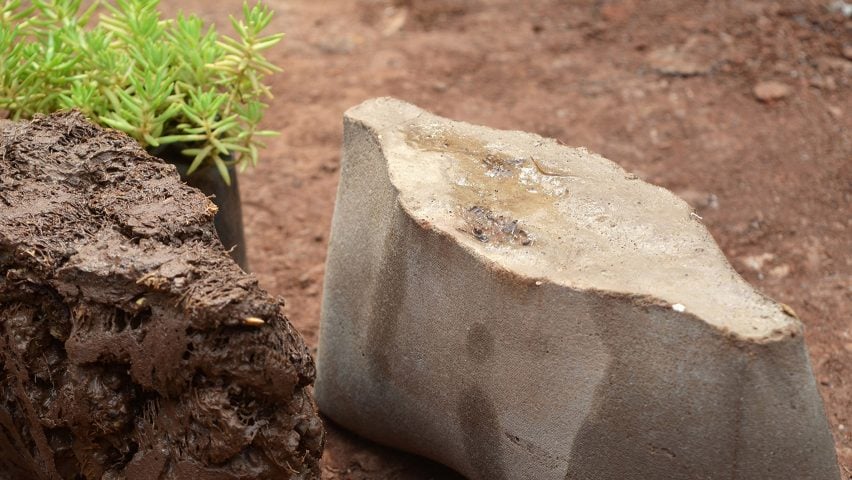
Bricks made from loofah and charcoal could promote biodiversity in cities
Plants and insects can thrive on the surface of these Green Charcoal bio-bricks, engineered as an alternative to concrete by researchers at the Indian School of Design and Innovation in Mumbai.
The researchers' eco-friendly bricks are made of soil, cement, charcoal and organic luffa fibres — better known as loofah, the plant commonly used for bath sponges.
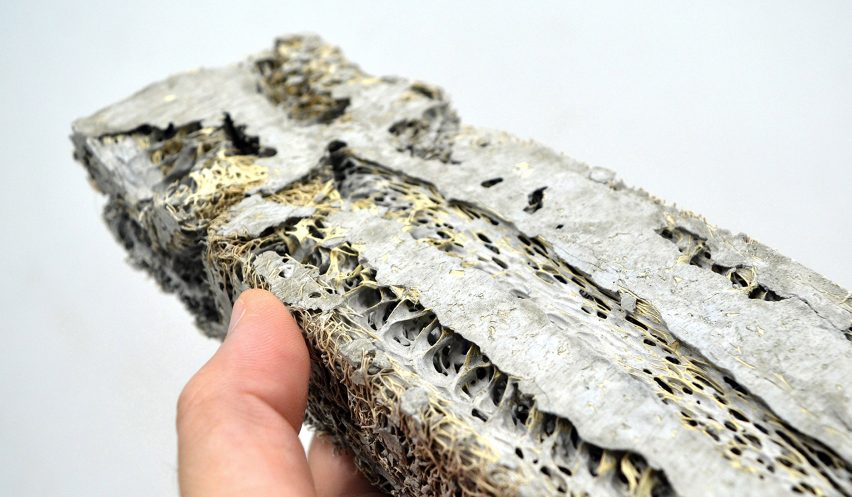
Another key ingredient is air. The bricks, named "Green Charcoal", contain more air pockets than a standard concrete block, making them up to 20 times more porous.
These air bubbles, created by natural gaps in the loofah's fibrous network, are important because they enable the bricks to harbour animal and plant life.
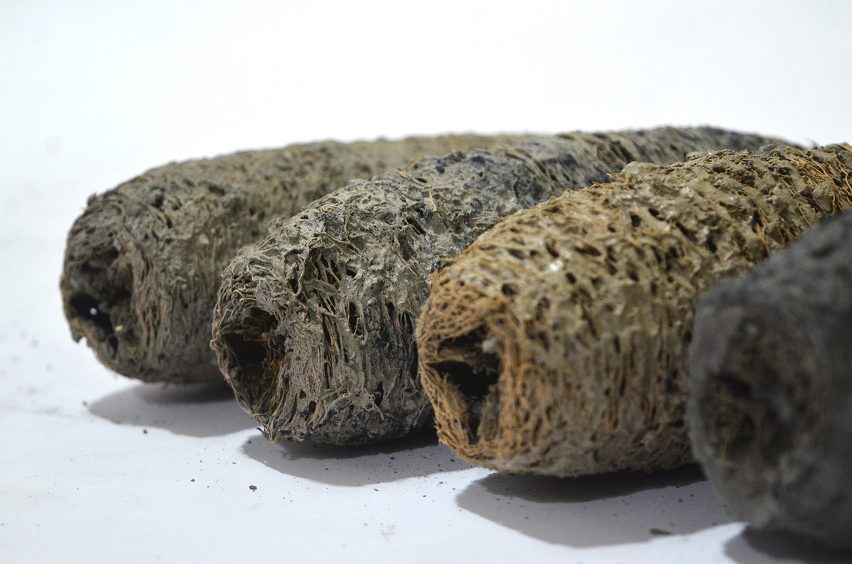
They also have a benefit for the humans who inhabit a Green Charcoal building. The project's leads, Shreyas More and Meenal Sutaria, say the pores "act as thousands of tiny water tanks" to reduce the bricks' temperature, cooling interior environments.
"This is aimed at creating a breathing state of architecture to ensure increased biodiversity in cities while providing healthy urban solutions for people," said More.
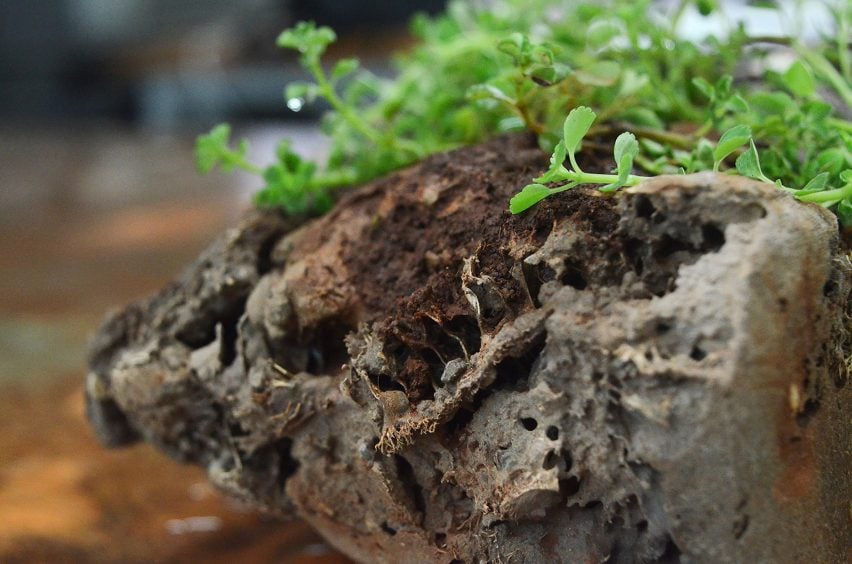
More and his team came up with Green Charcoal as a result of ongoing research at the Indian School of Design and Innovation into potential healthy materials for construction.
Charcoal as an ingredient only appears in small amounts, on the bricks' surface. It serves to purify the air by absorbing nitrates — a superfood for plants growing there.
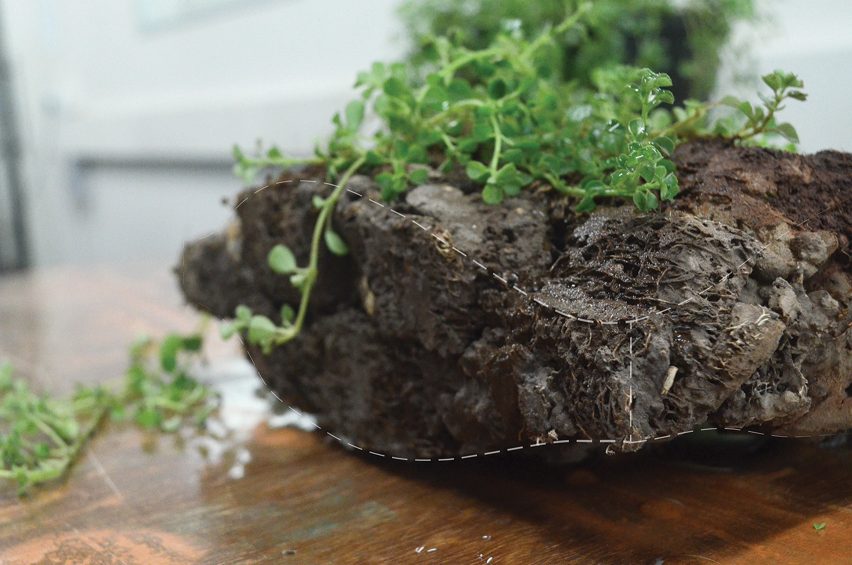
More sees his team's work as an extension of biophilic design, which focuses on providing a strong connection between humans and nature.
"In biophilic spaces, people are happier, patients recover faster, students learn better, retail sales are higher, workplace productivity goes up, and absenteeism goes down," said More.
"If the facades of buildings, compound walls and dividers that follow the road network are built using the Green Charcoal bricks, they will not only clean the air or control rise in temperature but will also inspire positive societies."
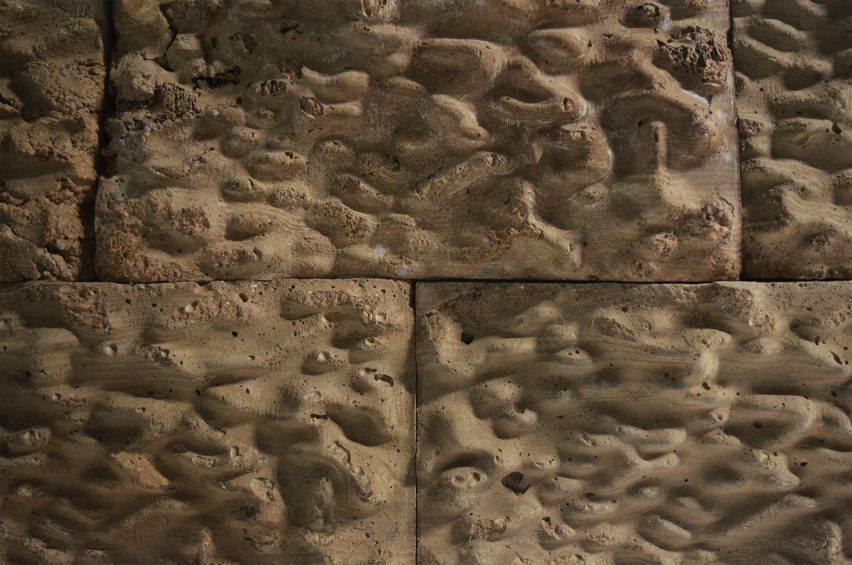
The bricks are lightweight as well as biodegradable. They need far less aggregate than standard concrete — another key advantage given the scarcity of sand, the most mined material in the world.
They still require cement, one of the world's largest sources of carbon dioxide emissions, although it is a slightly reduced amount.
There is no need for metal reinforcement, as the luffa fibres provide all the necessary strength and flexibility.
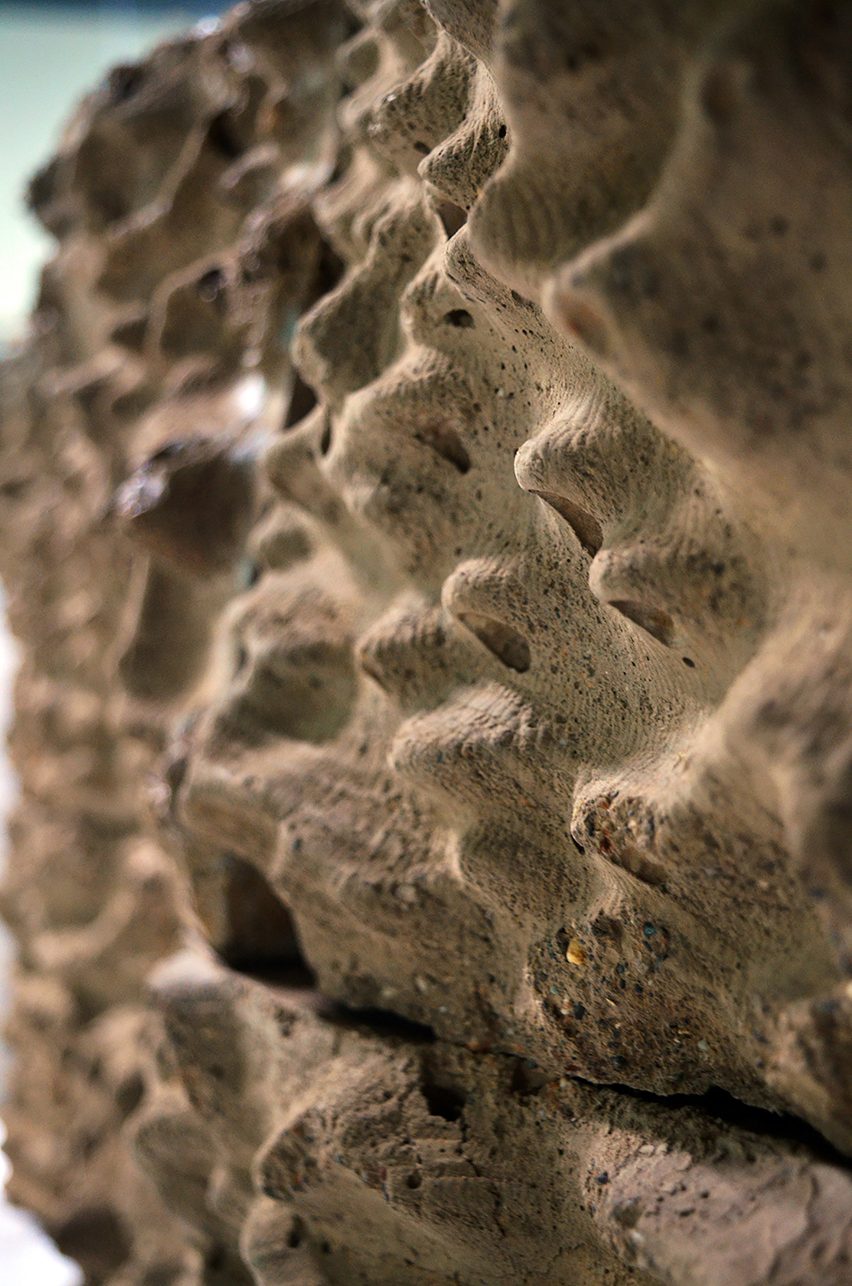
The Green Charcoal team is currently exploring different surface treatments to create a variety of bricks.
The race is on to create more sustainable building materials for the construction industry.
Among other recent innovations are no-heat bricks made from urine, concrete made with carrot nanoparticles instead of cement, and structures grown from mushroom mycelium.
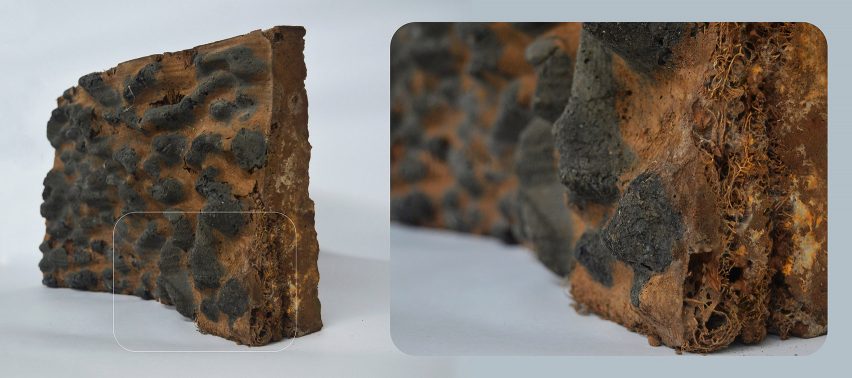
More called on architects to collaborate with engineers and scientists to help get healthy materials like his Green Charcoal to the point where they are commercially viable.
"Today, because of the increasing integration of the design, science and engineering domains, designers and architects are not mere specifiers of materials but rather can define the compositions of materials or even create materials for desired functions," he told Dezeen.
"We must believe that interior and architecture materials cannot simply be manufactured for structural, longevity and cost benefits," he continued.
"Over and above, they need to be highly performative with attributes like pollution control, climate responsiveness, sound absorption, thermal barriers, shape and colour changing, biodegradable, recycled and promoting the health and wellbeing of the people inhabiting the space."